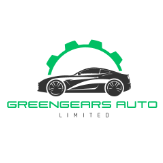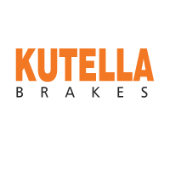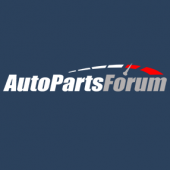-
Welcome to Auto Parts Forum
Whether you are a veteran automotive parts guru or just someone looking for some quick auto parts advice, register today and start a new topic in our forum. Registration is free and you can even sign up with social network platforms such as Facebook, X, and LinkedIn.
-
Similar Content
-
- 0 replies
- 410 views
-
Unlock Peak Vehicle Performance with Premium Auto Parts: Clifford Auto Parts Delivers Quality You Can Trust
- clifford auto parts
- carpart
- (and 3 more)
- 0 replies
- 487 views
-
Unlocking Savings and Sustainability: Used Toyota Parts from GreenGears Auto Limited
- toyota
- used parts
- (and 1 more)
- 0 replies
- 336 views
-
- 0 replies
- 357 views
-
Explore Top-Quality Brake Pads for Toyota Models at Our Factory!
By garryhe,
- toyotabrakepads
- toyotacorollabrakepads
- (and 1 more)
- 0 replies
- 577 views
-
-
Similar Topics
-
By Counterman
link hidden, please login to view N.A announced the expansion of its aftermarket portfolio with 13 new belt drive SKUs that offer application coverage for over 5.2 million vehicles in operation (VIO). A news release from
link hidden, please login to view said the latest product expansion “brings innovative solutions designed to meet the evolving needs of modern vehicles and repair technicians. The upgraded components enhance efficiency, simplify installation and reduce inventory complexity for distributors and shops.” The company’s new product lineup features:
Three pulleys covering over 2.1 million VIO. Seven overrunning alternator decouplers (OAD) spanning over 860,000 VIO. Three belt tensioners covering over 2.2 million VIO, now featuring advanced engineering upgrades for improved performance and ease of use. “It is essential that shops have access to reliable, OE-equivalent aftermarket parts as vehicles become more advanced. With 11 of the 13 new SKUs being first-to-market and OE-engineered, we’re giving technicians access to solutions that weren’t previously available,” said Ana Maria Lopez, product application manager at Litens Aftermarket N.A. “This is about staying ahead of industry complexity and ensuring shops have the right parts when they need them.”
All new SKUs are available now through
link hidden, please login to view distribution network, with additional product expansions planned throughout 2025, the company said.
The post
link hidden, please login to view appeared first on link hidden, please login to view.
link hidden, please login to view -
By dwil4
I need to replace the upper and lower control arms but OEM is out of mynprice range so just looking for advice/opinions on other good brands. I think it is well known now that Moog isn't the quality that it was a few years ago as most of their stuff is made in China. Please shoot me some experiences you have had with brands.
-
By Counterman
Anchor Industries announced the release of additional late model Lexus and Toyota coverage. Eight new part numbers are in stock and available for immediate delivery, the company said.
Covering over 2,300,000 applications and model years 2007-2025, these part numbers represent “excellent sales opportunities,” according to Anchor.
All application data is available electronically on
link hidden, please login to view, Epicor and WHI Solutions. For more details on
link hidden, please login to view complete program availability, contact your local sales representative or call Anchor’s customer service department direct at 1-888-444-4616.
The post
link hidden, please login to view appeared first on link hidden, please login to view.
link hidden, please login to view -
By Clifford Auto Parts
When it comes to modern vehicles, the performance and reliability we expect are largely due to the integration of sophisticated electronics and systems. One such essential component is the OEM (Original Equipment Manufacturer) Control Module. These modules play a critical role in the functionality of a vehicle, ensuring that everything from engine performance to safety features is operating at its best. But what exactly are OEM control modules, and why are they so important?
What Are OEM Control Modules?
OEM control modules are electronic units that control and monitor various functions within a vehicle. These modules are designed and produced by the vehicle’s original manufacturer, which ensures that they meet the highest standards for performance, durability, and compatibility. These modules are responsible for managing crucial systems in a vehicle, such as the engine control system (ECM), transmission control, and braking systems.
Unlike aftermarket parts, which are produced by third-party manufacturers, OEM control modules are specifically designed to match the vehicle’s make, model, and year. As a result, they offer a precise fit and functionality, ensuring the highest level of performance and reliability.
Why Are OEM Control Modules Important?
Enhanced Vehicle Performance: OEM control modules are engineered to interact seamlessly with the other systems in a vehicle. When these modules are working properly, they ensure that the vehicle runs at optimal efficiency, offering better fuel economy, smoother driving, and reduced emissions.
Guaranteed Compatibility: Since OEM control modules are made by the vehicle’s original manufacturer, they are guaranteed to be fully compatible with the vehicle’s systems. This eliminates concerns about compatibility issues that might arise with aftermarket parts, making the replacement or upgrade process much simpler and less risky.
Durability and Reliability: OEM control modules are built to last. They are designed using the same high-quality materials and manufacturing processes used for the original vehicle components, ensuring they offer long-lasting performance. When you choose an OEM module, you're investing in quality that won't let you down.
Warranty and Support: Many OEM control modules come with a warranty, providing peace of mind that any defects or issues will be covered. Additionally, support from the vehicle’s manufacturer ensures that if there is an issue with the part, you have access to reliable customer service and troubleshooting.
Improved Safety: OEM control modules are directly connected to critical safety features in your vehicle, such as airbags, antilock braking systems (ABS), and traction control. Ensuring these modules are in top working order is essential to maintaining the safety of the vehicle.
The Role of OEM Control Modules in Modern Vehicles
Modern vehicles rely on multiple control modules to ensure that everything from the engine to the infotainment system is functioning correctly. Some of the most common OEM control modules include:
Engine Control Module (ECM): This module manages engine functions such as fuel injection, ignition timing, and emissions control, ensuring that the engine operates efficiently. Transmission Control Module (TCM): The TCM controls the vehicle’s transmission system, adjusting shifting patterns for smoother performance. Body Control Module (BCM): This module is responsible for non-powertrain functions, such as lighting, door locks, and interior comfort features. ABS Control Module: This module manages the anti-lock braking system, preventing wheel lockup during heavy braking and improving vehicle stability. These are just a few examples, but in today’s vehicles, the integration of electronics in the form of OEM control modules is essential for ensuring everything functions smoothly.
Choosing the Right OEM Control Module
When it comes to replacing or upgrading an OEM control module, it's essential to choose one that fits your specific vehicle model and requirements. Working with trusted auto parts suppliers, like Clifford Auto Parts, ensures that you get a quality OEM control module at a competitive price. It’s always a good idea to check with an expert to ensure you're selecting the right part to suit your vehicle’s needs.
Conclusion
OEM control modules are integral components of modern vehicles, offering superior performance, reliability, and compatibility. Whether you're replacing a faulty module or upgrading your vehicle, choosing OEM parts is the best way to ensure your car or truck continues to run at its best. With their long-lasting durability and guaranteed fit, OEM control modules are a wise investment in the future of your vehicle. Always choose quality and reliability by opting for OEM when upgrading or replacing essential control modules.
By understanding the importance of OEM control modules, vehicle owners can make informed decisions that ensure their vehicle performs optimally for years to come.
-
-
By APF
When selecting parts for a car repair, it pays to know the differences between original and aftermarket parts. Whenever possible, get estimates for both.
Choosing between original and aftermarket car parts — and even used parts of either type — is all about squaring your priorities with your budget.
You’ll have different options depending on the part and the shop. And the best choice will depend on whether you’re trying to keep repairs cheap, restore your car’s appearance after a wreck or soup up your ride.
» SIGN UP: link hidden, please login to view
Before we get into that, here are the key differences:
Original equipment manufacturer (OEM) parts match those that came with your car, and are of the same quality as its original parts. They’re also the most expensive. Aftermarket parts are cheaper, and made by other manufacturers — often several, giving you more options. Used parts may have a bit of wear and tear, but should be inspected or rebuilt to ensure they’ll work. These are the cheapest option. Choosing between aftermarket and OEM parts
Your decision will depend on the type of repair and the quality and price of the parts. Always look for parts that come with a warranty, even if they’re OEM, so you’ll be protected in case they fail.
Auto body repairs
Some aftermarket parts may be OK for
link hidden, please login to view, but others won’t be as good, says Michael Calkins, manager of technical services at AAA. “There’s a lot of variation in quality.” For example, he says, aftermarket parts often don’t have the same level of rustproofing as original parts, fit and finish don’t match, or panels don’t align properly. If OEM parts are used in auto body repair, the car should look and work exactly as it did before the damage, because everything will match up. OEM parts are also crash-tested, unlike many aftermarket parts.
Aftermarket parts come at varying price points and levels of quality, but because they are cheaper, insurance companies often prefer them. If you want OEM parts but are dealing with an insurer that wants the shop to use aftermarket parts, ask to pay the difference.
“There’s also the option of used parts, depending on the age of the vehicle,” Calkins says. “It may be cheaper than an aftermarket part but still have all of the original quality.”
Mechanical repairs
A used part, whether it’s OEM or aftermarket, can really save money on repairs under the hood, so long as it’s inspected first and warrantied. And some aftermarket companies reverse-engineer their products to be even better than OEM versions.
For example, many car buffs will tell you that you can get heavy-duty shocks and struts or brake pads that are made of stronger materials. Scan some reviews online, or talk with your mechanic if you’re not sure whether an aftermarket part could be an upgrade.
Adding some extras
If you’d like to modify your ride by adding something like a backup camera or back-seat TV screen, you’ll probably be looking for aftermarket parts. Certain aftermarket upgrades could increase
link hidden, please login to view. This is especially true for improvements like a better sound system or alloy wheels, rather than mechanical repairs. Who provides OEM or aftermarket parts?
The options you’ll have for parts depends on the nature of the repairs and what type of shop you take your car to:
Dealership repair shops will offer only OEM parts — they have no reason to offer a cheaper product from a competitor link hidden, please login to view may be able to offer you a choice between OEM and aftermarket parts Independent garages that specialize in your type of vehicle will likely have both, but with quicker access to OEM parts, including used OEM parts, which can really save you Auto body shops can offer both, but if your collision repair is part of an insurance claim, the insurer will likely prefer aftermarket parts to save money Depending on the job, the cost of OEM versus aftermarket parts varies. Whenever you’re given the choice, ask to see estimates for both so you can weigh your options.
Source:
link hidden, please login to view
-






Recommended Posts
Join the conversation
You can post now and register later. If you have an account, sign in now to post with your account.
Note: Your post will require moderator approval before it will be visible.